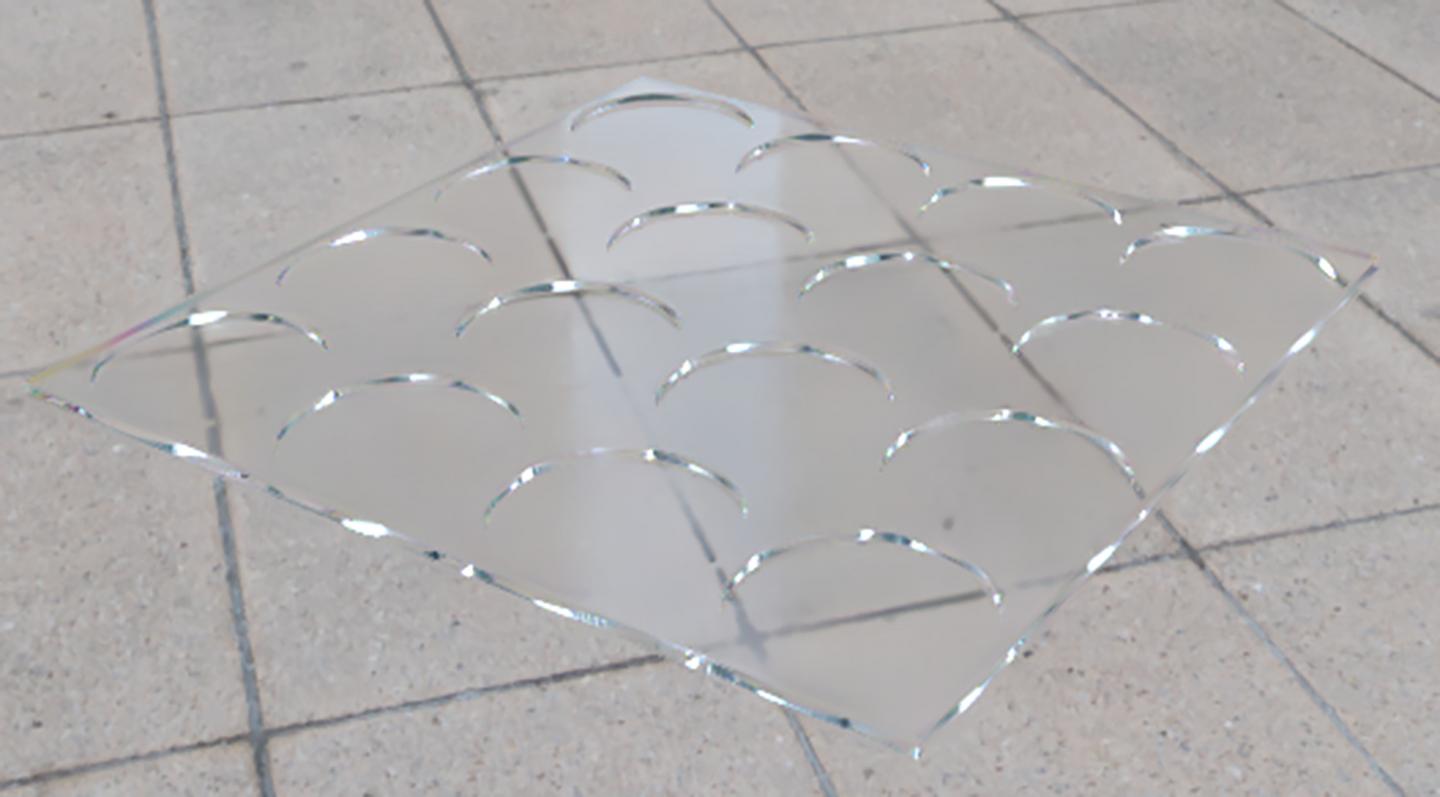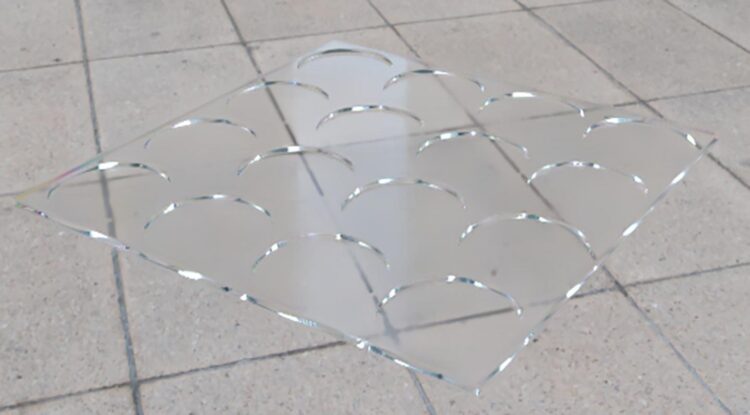Optically transparent glass material allows sound to propagate efficiently without any airflow.

Credit: Xihan Tan
WASHINGTON, September 1, 2020 — Glass windows typically offer some amount of soundproofing, sometimes unintentionally. In general, ventilation is required to achieve large sound transmission.
But some applications — like gas explosion studies — require a transparent partition that allows for acoustic propagation without the presence of airflow. In those cases, ventilation is not allowed.
In Applied Physics Letters, from AIP Publishing, researchers from Chongqing University, Hong Kong University of Science and Technology, and Shenzhen Fantwave Tech. Co. discuss a layered glass material they developed that allows for efficient sound transmission with no air ventilation.
The window is comprised entirely of ordinary glass, resulting in an inexpensive and optically transparent material. It starts with a thick glass plate, which the researchers drilled holes into and filled with a thin, flat glass disk. They call these disks “decorations.”
“It’s almost totally transparent for human eyes, so we can distinguish objects across this meta-window,” Li Wang, one of the authors, said.
The group observed extraordinary levels of acoustic transmission within a certain frequency range through the decorated window. In its present configuration, peak transmission occurs near the G above middle C, or G4.
By adjusting the sizes of the disks, different acoustic frequencies can be chosen for transmission. Additionally, multiple decorated window layers can be placed sequentially to pick more than one transmission peak, but this comes at a decrease in overall transmission beyond the desired range.
Beyond chemical applications, the group envisions day-to-day scenarios where their decorated windows could be of great value.
For example, prison reception rooms and bank counters would benefit from enabling sound transfer while preventing airflow. Considering the current pandemic, the decorated windows could allow for socially distant concerts as a partial return to normalcy.
###
The article, “Extraordinary acoustic transmission of a decorated window without ventilation,” is authored by Xihan Tan, Xiao Xiang, Chuandeng Hu, Yingzhou Huang, Shuxia Wang, Li Wang, and Weijia Wen. The article will appear in Applied Physics Letters on Sept. 1, 2020 (DOI: 10.1063/5.0021091). After that date, it can be accessed at https:/
ABOUT THE JOURNAL
Applied Physics Letters features rapid reports on significant discoveries in applied physics. The journal covers new experimental and theoretical research on applications of physics phenomena related to all branches of science, engineering, and modern technology. See https:/
Media Contact
Larry Frum
[email protected]
Related Journal Article
http://dx.





